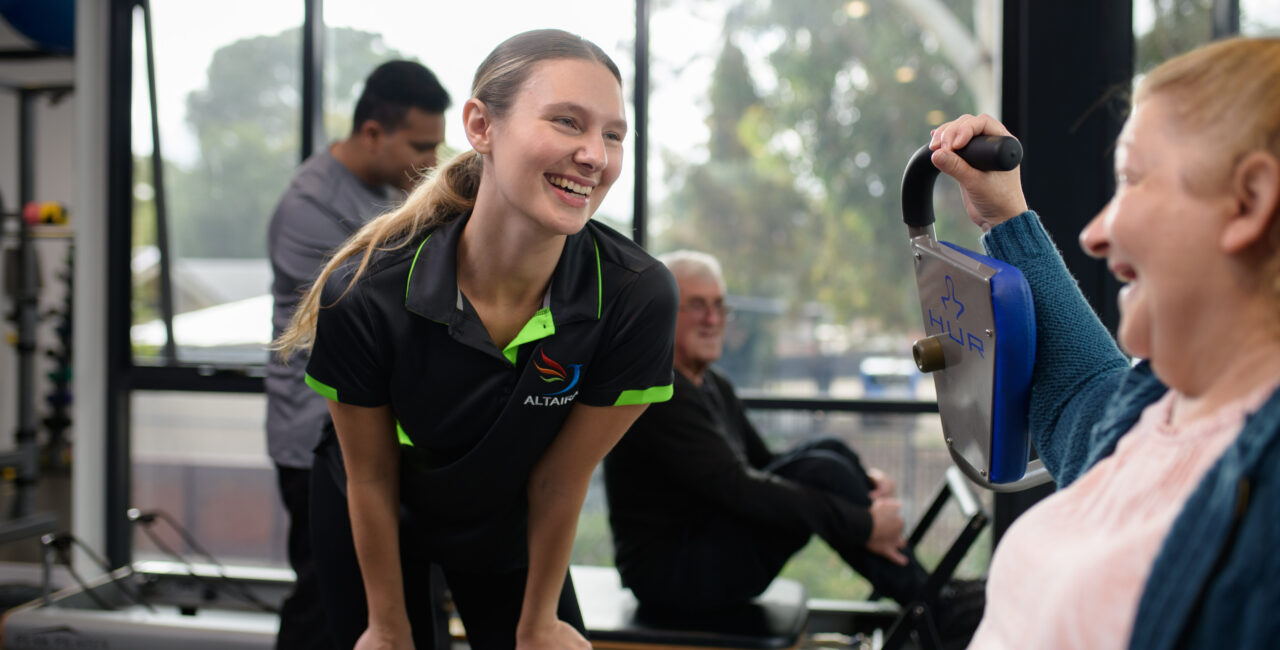Collaborative Care: How Nurses and Physiotherapists Can Work Together

Inter-professional collaboration is an important aspect of healthcare and especially aged care, as it brings different health professionals together, providing high-quality holistic care for older adults. Nurses and physiotherapists are key players in this dynamic, and their collaboration plays a pivotal role in improving the overall quality of care.
Nurses provide critical day-to-day care for residents, with responsibilities including administering medications, monitoring vital signs, managing wounds, and offering emotional support. They are essential for maintaining constant monitoring over residents, ensuring their needs are met, and keeping track of any changes in their condition. On the other hand, physiotherapists primarily focus on rehabilitation and mobility, helping residents to recover from injuries or surgeries, manage chronic conditions like arthritis, and prevent falls – a major risk factor for older adults, accounting for 40% of injury-related deaths in people over 65. Their expertise in body movement and mechanics complements the work that nurses do.
“I’d say we work in collaboration with nurses, as well as other health professionals such as exercise physiologists, occupational therapists, GPs, etc. We do so not just in aged care, but in all settings as part of a person’s holistic healthcare management plan,” says Michael, one of Altaira’s physiotherapists with extensive experience in aged care and rehabilitation. “We’re not just addressing physical recovery. We’re also contributing to the patient’s overall well-being, working with nurses who monitor and address their medical and emotional needs.”
Having nurses and physiotherapists work collaboratively contributes to holistic, patient-cantered care. Combining both their expertise helps to address all aspects of a resident’s health. For example, when a physiotherapist develops a rehabilitation plan, a nurse can contribute to monitoring progress, pain, and any side effects of medication. This constant exchange of information helps to prevent hospital readmissions and ensures that each resident receives the most comprehensive care possible. Also, in the cases of post-surgical rehabilitation, arthritis, and other chronic diseases, nurses and physiotherapists need to work together. Together, they create a more effective care pathway, leading to better health outcomes.
“When working as a treating physiotherapist in a Transitional Care Program (TCP),” Michael adds, “I’d liaise directly with nurses and other health professionals during multidisciplinary meetings. Each person in the program is assessed holistically. From my side, I provide input on their mobility and physical readiness to return home. Meanwhile, nurses ensure that their medical needs, like medication management and blood pressure monitoring, are stable enough for discharge.” This collaboration ensures that all aspects of a resident’s care are considered, providing them with a safer transition back home.
Despite these clear benefits, collaborative care still comes with its challenges. One common barrier can be communication, as in busy settings it can be difficult for nurses and physiotherapists to find time to discuss resident progress and treatment plans. Sometimes there is also a barrier with different language used, which may lead to misunderstanding or confusion in certain aspects of care. However, these challenges can be mitigated by establishing clear communication paths, regular meetings, and a strong emphasis on defining professional roles.
Furthermore, patient-centred care models are evolving to place a greater emphasis on mental health and holistic well-being. In this context, collaboration between nurses and physiotherapists can also extend to addressing the psychological and emotional needs of residents—an important aspect of caring for older adults. While physiotherapists work on improving physical function, nurses can provide emotional support and mental health assessments. This comprehensive approach ensures that the resident’s quality of life and recovery when needed is addressed from all angles, including the often-overlooked emotional challenges that come with injury or illness.
Ultimately, collaborative care between nurses and physiotherapists is vital for delivering high-quality care. By working together, these health professionals can address all aspects of a resident’s recovery and well-being. As healthcare continues to evolve and improve, it is essential that teamwork between healthcare providers is fostered and encouraged.









